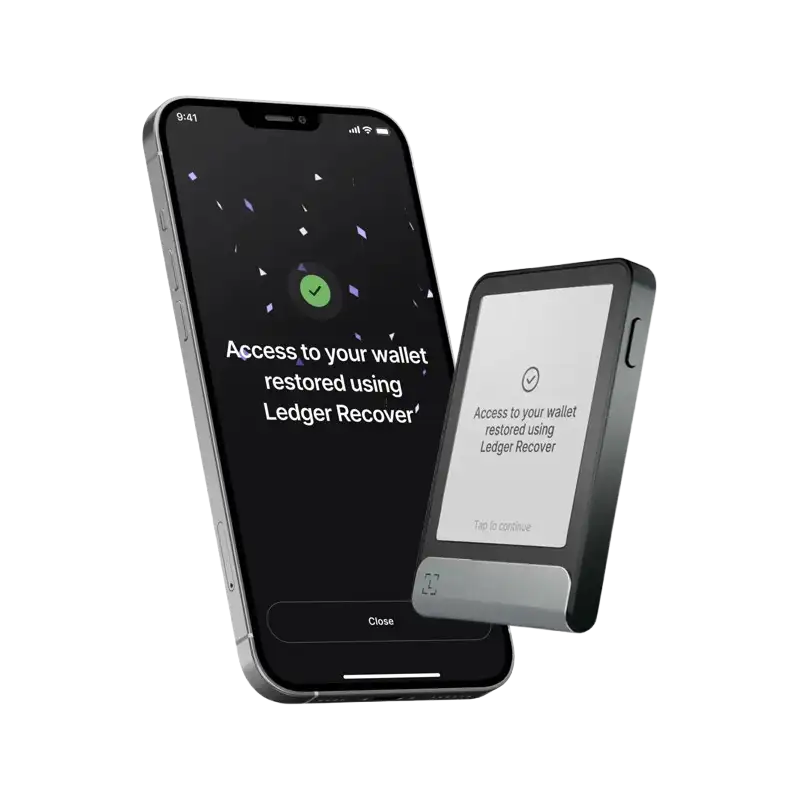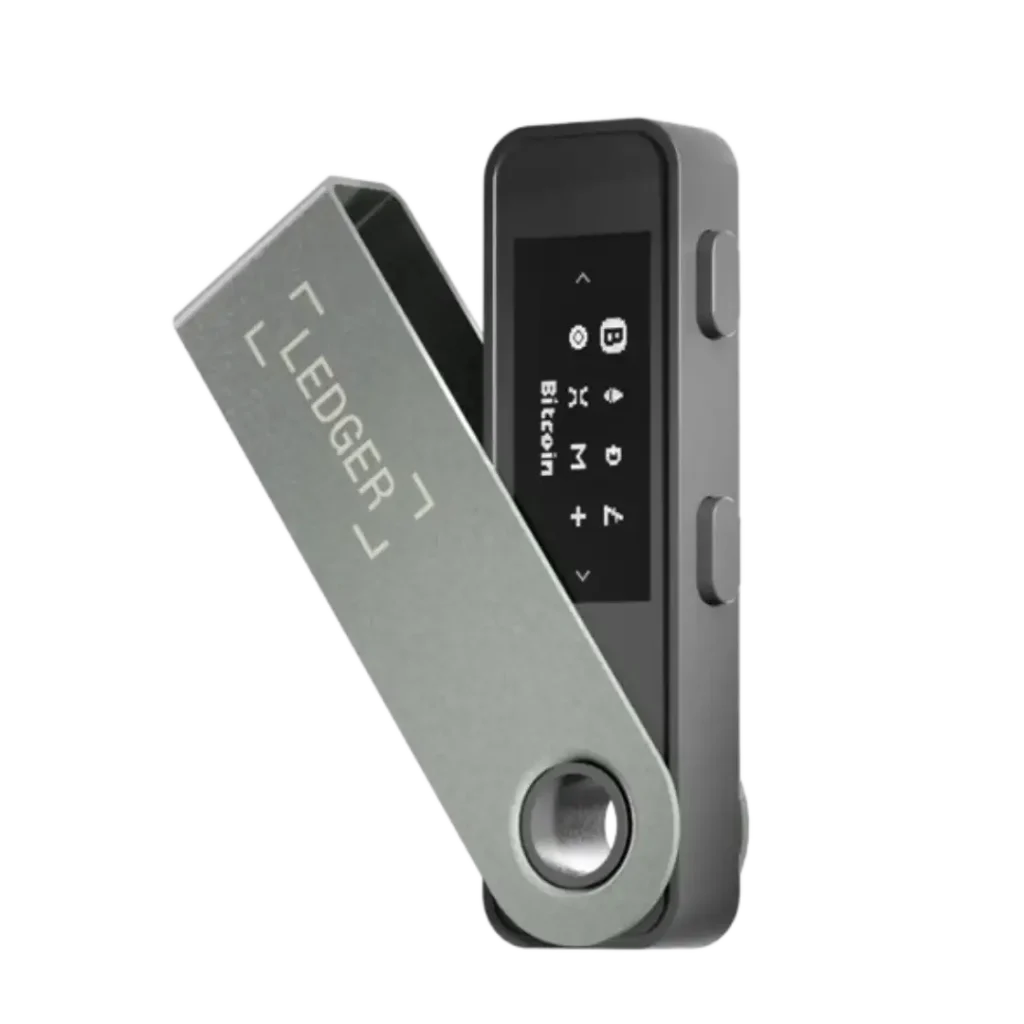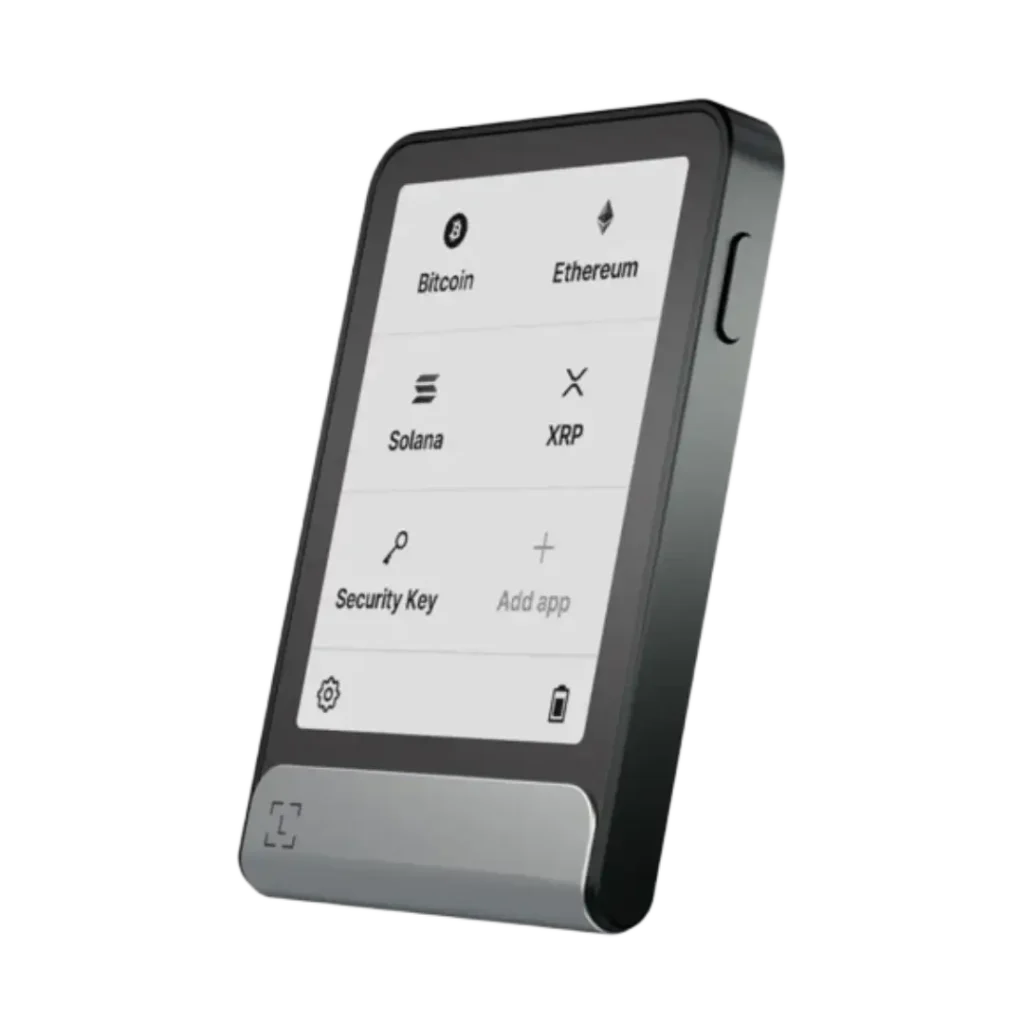In the world of cryptocurrency, one of the biggest fears isn’t volatility or government regulation, it’s losing access to your own coins. Unlike traditional banking, there’s no “forgot password” button for a blockchain wallet. If you misplace or destroy your seed phrase, you risk losing your entire portfolio forever. This brutal finality has scared many mainstream investors away from crypto self-custody, pushing them toward centralized exchanges that offer account recovery but compromise on true ownership.
Ledger, already a household name in hardware wallets, recognized this pain point and introduced Ledger Recover. Instead of leaving users to deal with fragile paper backups or etched steel plates, Ledger Recover offers an optional subscription service designed to make key recovery possible without sacrificing too much of the self-custody ethos. The service backs up an encrypted version of your private key, fragments it, and distributes those pieces securely among trusted custodians. If you ever lose access, you can verify your identity and recover your wallet, something that was previously unthinkable in the hardware wallet space.
But the concept has divided the crypto community. Supporters see it as a gateway for mass adoption, giving newcomers peace of mind. Critics worry it introduces new risks, such as reliance on third-party custodians, identity verification, and potential regulatory exposure. This makes Ledger Recover less of a universal solution and more of a user-profile-specific product.
This review takes you through every layer: pricing, security, privacy, usability, and alternatives, with the single goal of answering: Is Ledger Recover the right pick for you?
Quick Summary

Ledger Recover is an optional paid subscription service that helps users back up and restore their private keys if they lose access to their Ledger wallet. Instead of relying solely on a fragile recovery phrase, Ledger splits an encrypted version of your key into three parts and stores them with independent custodians. If disaster strikes, you can prove your identity, reassemble the fragments, and regain access to your funds.
This service is designed for people who want peace of mind and prefer the safety net of professional recovery over managing seed phrases themselves. At the same time, it raises valid concerns about privacy, trust in third parties, and recurring subscription costs.
| Feature | Ledger Recover Snapshot |
|---|---|
| What It Is | A subscription-based recovery service for Ledger wallets. |
| Who It’s For | Everyday users who fear losing their recovery phrase or prefer professional recovery support. |
| Core Risks | KYC verification, custodial involvement, subscription cost, and potential regulatory exposure. |
| Cost | Paid monthly/annual subscription (after free trial). |
| Availability | Limited to certain countries and ID types; not global yet. |
The Good
The Bad
You’ll Need One of These Ledger Wallets,
Ledger Nano X

Ledger Stax

Ledger Nano S+

Ledger Flex

In short, Ledger Recover is a bridge between pure self-custody and centralized recovery, perfect for users who want more safety but not ideal for privacy maximalists or advanced crypto natives.
What Is Ledger Recover?
Ledger Recover is not a new hardware wallet or a replacement for your Ledger device; it’s an optional subscription service designed to protect against the most dreaded scenario in crypto: losing your recovery phrase. In traditional self-custody, you write down a 12–24 word seed phrase on paper, metal, or another medium. If you misplace it, your funds are gone forever. Ledger Recover changes that equation by offering a professional recovery layer that sits alongside your hardware wallet.
At its core, the service works by taking a backup of your private key, but not in the raw, unprotected form that most users fear. Instead, Ledger uses encryption to create what they call a “spare key.” This spare key is then fragmented into three encrypted pieces, each stored securely with separate custodians (Ledger, Coincover, and EscrowTech). No single party holds your full key, and the fragments are useless without your explicit authorization.
When you need to recover your wallet, Ledger Recover requires you to go through an identity verification process. This includes submitting valid identification documents, and once verified, two out of the three custodians can reassemble your fragments to restore access on a new or factory-reset Ledger device.
The idea is to give users a safety net that reduces the burden of managing a recovery phrase entirely on their own. For newcomers to crypto, families worried about inheritance, or professionals holding mid-sized portfolios, Ledger Recover promises a blend of convenience and security.
However, it is not a universal solution. Privacy-conscious users may feel uneasy about involving identity checks, and advanced investors might still prefer cold storage methods where no third party has any role in their keys.
In essence, Ledger Recover is Ledger’s attempt to balance accessibility with security, targeting the everyday user who values peace of mind over pure decentralization.
Compatibility & Requirements
Ledger Recover isn’t universally available for all hardware wallets or users. It has specific requirements around supported devices, software, and identity verification. Meeting these conditions is essential before subscribing.
Here’s a breakdown:
| Requirement | Details | Why It Matters |
|---|---|---|
| Supported Devices | Works with Ledger Nano X and Ledger Stax only. | Older models (Nano S, Nano S Plus) lack the Secure Element support needed for encrypted spare-key management. |
| Ledger Live App | Required on desktop or mobile to set up, subscribe, and recover. | Ensures recovery is handled in a controlled, integrated environment. |
| Identity Verification (KYC) | Valid government-issued ID (passport, national ID card, or driver’s license, depending on country). Requires a working camera for live capture. | Provides a secure way to authenticate users before fragments can be reassembled. |
| Internet Connection | Needed for subscription, identity checks, and recovery. | Custodians and identity verification operate via cloud infrastructure. |
| Active Subscription | Must maintain a valid paid subscription (after free trial). Lapsed payments may trigger reactivation fees. | Service continuity depends on keeping your plan active. |
| Country/Region Support | Not available everywhere; the supported list is limited (covered in the next section). | Determines eligibility, you cannot subscribe if your country is excluded. |
Key Takeaway
Ledger Recover is designed for modern Ledger hardware users who are comfortable with KYC and plan to stay within Ledger’s ecosystem. It’s a forward-looking feature, but not compatible with older devices or users who want anonymity.
Availability by Country/Region
Ledger Recover is not a global service, at least, not yet. Because it involves identity verification (KYC) and coordination with third-party custodians, its rollout depends heavily on local laws, regulatory environments, and the types of identification documents that are legally recognized. This means your ability to subscribe isn’t just about owning the right Ledger device; it also depends on where you live and what ID you can provide.
At launch and in subsequent updates, Ledger made Ledger Recover available in select regions. The most reliable, updated list is provided during sign-up in Ledger Live. If your country isn’t supported, you won’t even see the option to subscribe.
Here’s a snapshot of current availability and accepted ID types (subject to Ledger’s updates):
| Region | Availability | Accepted ID Types | Notes |
|---|---|---|---|
| United States | Available | Passport, Driver’s License, State ID | Broad coverage across most states. |
| United Kingdom | Available | Passport, Driver’s License, National ID | Standard UK KYC compliance applies. |
| European Union (selected countries) | Available | Passport, National ID | Coverage is partial; smaller member states may be excluded. |
| Canada | Available | Passport, Driver’s License, Provincial ID | In some cases, proof of residence may also be required. |
| Australia | Available | Passport, Driver’s License | ID must align with Ledger Live account details. |
| Asia-Pacific (limited) | Partial | Passport (only in select countries) | Availability restricted; broader rollout pending. |
| Africa, Middle East, and other restricted regions | Not Available | – | Service is currently not offered in these jurisdictions. |
What it means for you:
- If your country is not supported, Ledger Recover will not appear as an option in Ledger Live.
- Your ID must be valid and issued by the same country you reside in.
- Ledger has suggested future expansion, but coverage remains concentrated in major Western markets.
Pricing & Plans
Ledger Recover is a subscription service, not a one-time purchase. This means you’ll be paying recurring fees to maintain access to your encrypted backup. While some users see this as a small price for peace of mind, others question whether the long-term costs make sense compared to traditional free methods like paper or metal backups.
Ledger offers a one-month free trial, after which standard subscription pricing applies. Payment is charged in euros (EUR), regardless of your location, and converted by your bank or card provider if necessary. If your subscription lapses, there are administrative fees to reactivate the service and restore access.
Here’s the current pricing structure:
| Plan | Cost | Billing | Notes |
|---|---|---|---|
| Free Trial | €0 | First month | Available only once per account. |
| Standard Subscription | €9.99 per month | Billed monthly | Auto-renews until canceled. |
| Annual Subscription | €119.88 | Billed yearly | Equivalent to €9.99/month, but charged upfront. |
| Reactivation Fee | Variable (admin fee) | One-time, if subscription lapses | Must be paid to restore access if the account goes inactive. |
- Recurring Nature: Unlike a one-time hardware purchase, this is an ongoing cost. Long-term users could pay hundreds of euros over several years.
- Currency Settlement: Billing is processed in euros, which may add conversion charges for non-EU users.
- Auto-Renewal: By default, subscriptions renew automatically. You need to actively cancel if you no longer want the service.
- Value Question: For large portfolios, the cost is trivial insurance. For small or casual holders, it may feel unnecessary compared to free alternatives.
In short, Ledger Recover’s pricing is designed for mainstream, risk-averse users who see recurring payments as a fair trade-off for guaranteed recovery.
How Ledger Recover Works (Step-by-Step)
Ledger Recover is built to make recovery possible without exposing your private key directly. To understand the process, it’s important to break down how the service sets up, stores, and restores your wallet access.
1. Setup and Enrollment
When you subscribe through the Ledger Live app, you first go through identity verification (KYC). This ensures that only you, the verified account holder, can later request recovery. Once your ID is confirmed, Ledger initiates the backup process inside your Ledger device.
2. Creating the Spare Key
Instead of using your raw recovery phrase, your Ledger device generates a “spare key.” This spare key is mathematically linked to your wallet but never leaves the Secure Element chip unprotected.
3. Fragmentation and Encryption
The spare key is then encrypted and split into three fragments. These fragments are distributed to three separate custodians:
- Ledger
- Coincover (a crypto insurance and recovery specialist)
- EscrowTech (a secure data storage company)
Each custodian stores only one fragment. No single party can reconstruct your key, and the fragments are useless without your identity authorization.
4. Recovery Process
If you lose your Ledger or forget your recovery phrase:
- You log in to Ledger Live and request a recovery.
- You verify your identity again using the same ID documents and process as enrollment.
- Once approved, two out of three custodians send their fragments back to your Ledger device, which reassembles the spare key internally.
- You regain access to your funds on a new or factory-reset device.
5. Attempt Limits and Conditions
Ledger enforces limits on recovery attempts, for example, a capped number of identity verification tries per month/year. You must also use a Ledger-supported device (Nano X or Stax) and keep your subscription active.
Security Architecture & Threat Model
Ledger Recover is built on a layered security model that tries to balance user convenience with cryptographic robustness. To evaluate whether it’s trustworthy, you need to understand how the encryption, key storage, and custodian model function together, and what the potential attack vectors are.
Secure Element and Spare Key
The backbone of Ledger’s approach is the Secure Element chip inside supported devices (Nano X, Stax). This is where the “spare key” is generated and encrypted before it ever leaves the device. The raw private key or seed phrase is never exposed outside the Secure Element, meaning the fragments that go to custodians are always encrypted at the source.
Fragmentation and Custodians
The encrypted spare key is split into three fragments. These are stored independently by:
- Ledger
- Coincover (known for insurance-backed crypto protection)
- EscrowTech (a specialist in escrowed data storage)
The system uses a two-out-of-three (2-of-3) scheme, meaning any two custodians can provide their fragments to reassemble the spare key. This ensures redundancy: if one custodian is offline or compromised, recovery can still proceed.
Threat Mitigation
- Custodian Compromise: A single custodian’s fragment is useless without the others and without a verified identity. Even if two custodians collude, recovery still requires your device and successful ID verification.
- Identity Spoofing: Ledger requires government-issued ID and biometric checks during recovery, adding friction against impersonation.
- Service Outage: The 2-of-3 model ensures continuity even if one custodian ceases operations. Ledger also claims business continuity plans are in place to transition custody if a partner fails.
- Data Breach: Since fragments are encrypted and meaningless without reassembly, a leak from one custodian alone does not compromise funds.
Remaining Risks
- KYC Data Exposure: While cryptographic security is strong, the identity verification process introduces a separate layer of risk, storing personal data with third-party verifiers.
- Centralization Concerns: Users must trust Ledger and its chosen partners not only with security but also with long-term service continuity.
- Regulatory Pressure: Because custodians hold encrypted fragments tied to identities, governments could potentially compel access under certain jurisdictions.
Privacy, Identity & Data Handling
Ledger Recover’s security model is robust, but the service introduces an entirely new layer of complexity: identity verification and data handling. This is where much of the community debate lies. While cryptography keeps your private keys safe, the KYC (Know Your Customer) process changes how anonymous your crypto ownership can truly remain.
Identity Verification
To subscribe, you must complete a KYC process that includes:
- Submit a government-issued photo ID (passport, driver’s license, or national ID, depending on your country).
- Performing a live capture using your smartphone or computer camera to verify liveness.
- Matching the ID against your Ledger account details in Ledger Live.
This identity information is handled by Ledger’s third-party verification partners, not stored directly on your device.
What Data Is Collected
- Personal Identifiers: Full name, date of birth, and ID number.
- Biometric Data: Facial scans for liveness checks.
- Metadata: Country of residence, device usage, subscription details.
Where and How It Is Stored
According to Ledger, custodians only hold encrypted fragments of the spare key, not your identity data. However, the KYC partner retains identity verification results. This means that your personal data exists in regulated environments outside of Ledger’s direct infrastructure, subject to privacy and data retention laws in those jurisdictions.
Data Retention and Deletion
Ledger claims that identity data is only stored as long as required for compliance and recovery functionality. Users can cancel the subscription, but depending on local laws, some data may need to be retained for auditing or anti-fraud purposes. Full deletion may not always be immediate.
Privacy Risks
- Loss of Anonymity: Ledger Recover ties your wallet recovery to your real-world identity, undermining one of crypto’s strongest principles.
- Third-Party Exposure: Even if custodians are secure, identity verification partners introduce another attack vector for hacks or misuse.
- Regulatory Access: Governments in certain jurisdictions may compel access to identity verification records, creating potential surveillance risks.
Key Takeaway
For many mainstream users, providing ID for recovery feels like a reasonable compromise to safeguard their funds. For privacy-focused investors, however, Ledger Recover represents a fundamental shift away from self-sovereignty, turning an anonymous asset into one bound by KYC compliance.
User Experience & Ease of Use
Crypto security solutions often fall short not because of weak technology, but because they are too complex for everyday users. Ledger Recover was designed with this problem in mind. Instead of expecting everyone to master seed phrase storage and recovery, the service integrates directly into Ledger Live and follows a workflow that most users can understand.
Onboarding
Setting up Ledger Recover begins inside the Ledger Live app. After choosing the service, you complete identity verification with a government-issued ID and a live capture process. The steps are guided and relatively intuitive, though they take longer than simply writing down a recovery phrase. Once verification succeeds, your device encrypts and fragments the spare key automatically. The user doesn’t interact with this step, which makes it less error-prone.
Day-to-Day Use
Once enrolled, Ledger Recover runs silently in the background. You continue using your Ledger Nano X or Stax as usual. There is no constant reminder or ongoing maintenance task. The subscription fee auto-renews monthly or annually, and as long as your payments are active, your backup remains valid.
Recovery Workflow
If you lose access to your device or recovery phrase, initiating recovery is done through Ledger Live. You log in, request recovery, and repeat the identity verification process. After approval, the custodians release fragments back to your new or factory-reset device. This flow is much less stressful than manually restoring from a seed phrase, especially for users who panic in high-stakes situations.
Limitations
Ledger imposes limits on recovery attempts per month and per year. This prevents abuse but may frustrate users who encounter repeated technical or ID-verification errors. Additionally, recovery only works with supported Ledger devices, so you cannot migrate to third-party wallets.
Key Takeaway
Ledger Recover transforms recovery into a guided, app-driven process, removing much of the technical burden on the user. It’s straightforward for newcomers and reassuring for casual investors, but advanced users may find the restrictions and KYC hurdles unnecessary compared to traditional seed phrase backups.
Risk Scenarios & Edge Cases
No matter how strong a system looks on paper, the real test comes when things go wrong. Ledger Recover is designed with redundancies, but users should carefully consider edge cases that could impact recovery.
Custodian Failure
Ledger Recover uses a 2-of-3 custodian model (Ledger, Coincover, EscrowTech). If one custodian goes offline permanently, the other two can still reassemble your spare key after identity verification. This redundancy ensures that a single business failure does not lock you out. However, if two custodians were to disappear simultaneously, recovery would become impossible. While unlikely, this dependency introduces a systemic risk tied to Ledger’s long-term partnerships.
Lapsed Subscription
If you fail to maintain your subscription payments, the service does not instantly delete your backup. Instead, it becomes inactive. To regain access, you’ll need to reactivate and may have to pay administrative fees. For users who forget about recurring billing or run into payment issues, this could delay recovery during emergencies.
Identity Spoofing or Theft
Since recovery relies on KYC, attackers might attempt to impersonate you using stolen IDs or fake documents. Ledger mitigates this with biometric liveness checks and fraud detection, but no system is infallible. Users must trust the verification partner to reject fraudulent attempts consistently.
Government or Regulatory Pressure
Because Ledger Recover ties wallet recovery to personal identity, governments may request data or compel custodians to cooperate in certain jurisdictions. While encrypted fragments remain secure, the KYC trail could make users more visible to regulators, which privacy purists will find unacceptable.
Service Discontinuation
Another edge case is if Ledger were to discontinue Ledger Recover in the future. In theory, users would be notified and given time to recover their spare key. However, the dependency on Ledger’s infrastructure means continuity risk cannot be entirely dismissed.
Alternatives & Comparisons
Here’s a direct comparison of Ledger Recover against other recovery methods:
| Method | How It Works | Best For |
|---|---|---|
| Ledger Recover | Encrypted spare key is split into 3 fragments and stored with Ledger, Coincover, and EscrowTech. Recovery requires KYC and a supported Ledger device. | Mainstream users who want peace of mind and are comfortable with ID verification |
| Paper/Metal Seed Backup | Write recovery phrase on paper or engrave it on steel and store securely. | Privacy-focused users who value full self-sovereignty |
| Shamir Backup (SLIP-39) | The recovery phrase is split into multiple parts; a threshold (e.g., 2 of 3) is needed to restore. | Advanced users seeking redundancy without third-party trust |
| Social Recovery (Smart Contracts) | Guardians (friends, family, or institutions) approve recovery through multi-signature contracts. | DeFi users and Ethereum-native investors |
| Ledger Recovery Key (Physical Spare Key) | Separate Ledger device acts as a physical backup of your recovery phrase. | Users preferring tangible backup with full personal control |
Who Should (and Shouldn’t) Use Ledger Recover
Ledger Recover is not a one-size-fits-all solution. Its value depends heavily on your level of technical comfort, your privacy expectations, and the size of your crypto holdings. Understanding whether this service fits your needs requires looking at both the ideal user profile and the users who may want to avoid it.
Who Should Use Ledger Recover:
- Everyday Crypto Investors: If you’re holding modest amounts of Bitcoin, Ethereum, or other assets and your biggest fear is misplacing your recovery phrase, Ledger Recover offers peace of mind. It removes the anxiety of paper or metal backups that can be stolen or destroyed.
- Newcomers to Self-Custody: For beginners, managing seed phrases feels intimidating. Ledger Recover simplifies the process and creates a recovery path that feels closer to traditional finance. This can lower the barrier for mass adoption.
- Busy Professionals and Families: If you don’t have the time to manage complex backup systems or want your loved ones to inherit your assets without advanced crypto knowledge, Ledger Recover provides a user-friendly safety net.
- Investors With Mid-Sized Portfolios: For holders with a few thousand dollars to low six figures in crypto, paying a recurring subscription can feel like an affordable insurance premium.
Who Shouldn’t Use Ledger Recover:
- Privacy Purists: If you reject KYC on principle or want no third-party involvement in your crypto journey, this service is not for you. Ledger Recover introduces identity verification and custodian reliance.
- Advanced Crypto Natives: Users comfortable with Shamir backups, multi-sig setups, or social recovery will likely see Ledger Recover as unnecessary overhead.
- High-Value Holders and Institutions: For very large portfolios, institutional-grade custody solutions or multi-signature vaults may be safer and more flexible than a subscription service tied to identity.
- Unsupported Regions: If you live in a country where Ledger Recover isn’t available, or if your ID type isn’t supported, the service won’t be an option.
Key Takeaway
Ledger Recover is best for mainstream, risk-averse investors who value peace of mind over strict decentralization. It is not designed for hardcore privacy advocates or institutions managing millions in assets. In other words, it bridges the gap between everyday users and the unforgiving world of self-custody.
Final Verdict: Should You Subscribe to Ledger Recover?
Ledger Recover represents a bold step toward making crypto self-custody more approachable for everyday users. It removes the single point of failure that comes with paper or metal seed phrases and replaces it with a professional-grade recovery system backed by encryption and independent custodians. For newcomers, families, and mainstream investors who fear losing their keys more than anything else, this service offers peace of mind that traditional methods can’t match.
At the same time, Ledger Recover is not without trade-offs. By introducing identity verification, recurring subscription fees, and reliance on third-party custodians, it shifts the self-custody experience closer to traditional finance. Privacy-focused users and advanced crypto natives may see it as compromising the very principles of decentralization. Its availability is also limited to select regions, leaving many users without access.
The decision to use Ledger Recover ultimately depends on your priorities. If your goal is ease of use, peace of mind, and a safety net against human error, Ledger Recover is one of the strongest recovery solutions currently available. If, however, your goal is maximum privacy, sovereignty, and independence from external parties, traditional seed backups or advanced multi-sig setups will remain the better path.
In short, Ledger Recover is best understood as an insurance policy for the average crypto investor, valuable for many, unnecessary for some, and unacceptable for those who view privacy as non-negotiable.
File Your Crypto Taxes in Less Than 20 Minutes,
Coinpanda

Coin Ledger

Koinly

Frequently Asked Questions [FAQs]
No. Ledger Recover is optional. You can continue using your Ledger wallet with a seed phrase backup if you prefer.
Your encrypted fragments remain stored but inactive. To recover later, you’ll need to reactivate the subscription and may pay an administrative fee.
No. Each custodian holds only one encrypted fragment, which is useless without the others and your verified identity.
Not always. Some records must be retained for compliance, but Ledger states that data is only kept as long as necessary for regulatory or recovery purposes.
No. Recovery only works on supported Ledger devices (Nano X and Stax). You cannot restore to third-party wallets.
You can still maintain your subscription, but new enrollments may not be possible. Recovery could be limited if ID verification no longer matches your current jurisdiction.
Ledger sets limits on recovery attempts per month and per year to prevent abuse. Details appear in the Ledger Live app during recovery.
The encrypted fragments remain secure, but because identity verification is required, regulators could access your verification data. This makes it less private than traditional seed backups.
Did we help you out? Show us some support:
Ethereum Address

0xE7D047f1FA287f4ad298864535a62E45E789b445
Bitcoin Address

bc1q84w4qvaz5a2wne9xlf799s8we4q64a2yrttet8
Solana Address

52wokPhAncfZwGtTCHMycXGKKKAPENBw5yFTMewmpHQz

